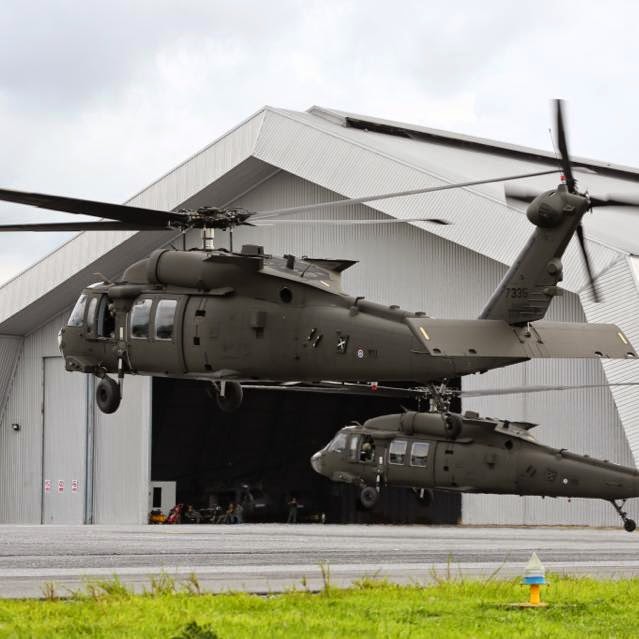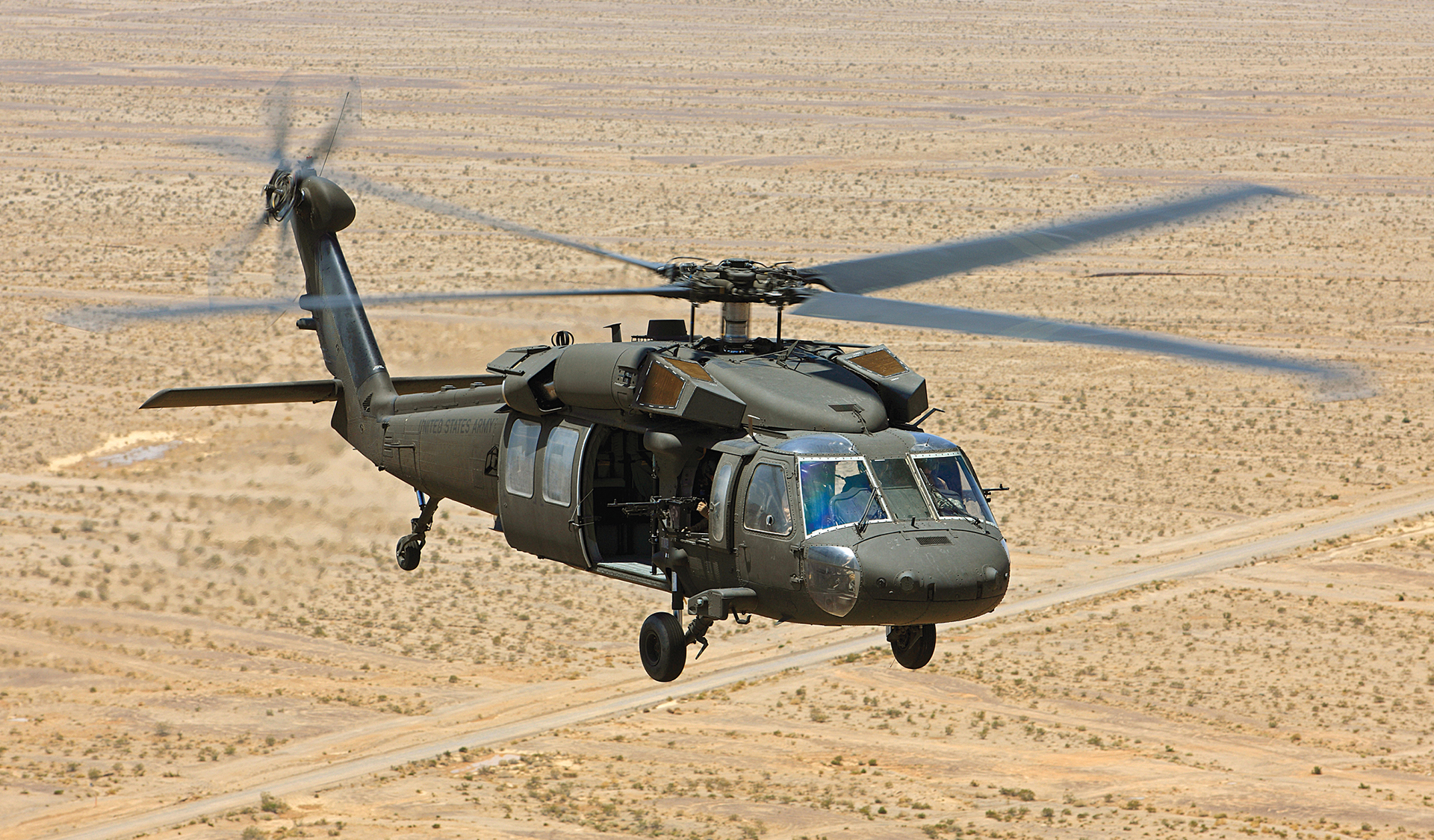Recognizing the Mechanics and Engineering Behind Uh 60 Helicopters
The UH-60 helicopter, generally called the Black Hawk, stands as a pinnacle of modern-day rotorcraft innovation, symbolizing a blend of durable design and elaborate mechanics. From its creation to its present models, the evolution of this airplane showcases a combination of innovation and usefulness. As we peel off back the layers of the UH-60's layout, a globe of detailed systems and precise engineering emerges. Recognizing the auto mechanics and engineering behind this flexible aircraft reveals a realm where precision satisfies power, and where each component plays a crucial duty in attaining trip.
History of UH-60 Helicopters
The history of UH-60 helicopters traces back to the late 1970s when the United States Military looked for a advanced and functional energy helicopter to replace its aging fleet. In response to this requirement, the Sikorsky Aircraft Company developed the UH-60 Black Hawk helicopter. Presented in 1979, the UH-60 quickly became a staple in armed forces procedures because of its excellent capabilities.
The UH-60 was made to excel in a selection of objectives, including army transportation, medical emptying, digital warfare, and unique procedures. Its capacity to adapt to different roles made it a beneficial asset to the united state Army and other army forces around the globe
For many years, the UH-60 platform has undertaken numerous upgrades and variants to enhance its efficiency and maintain speed with advancing mission requirements. These helicopters have seen comprehensive service in conflicts such as the Gulf War, Afghanistan, and Iraq, showcasing their integrity and versatility in diverse functional environments. The UH-60's rich background is a testimony to its enduring tradition as a top utility helicopter.

Engine and Power Systems
Utilizing advanced propulsion innovation, UH-60 helicopters are outfitted with sophisticated engine and power systems to make sure optimum efficiency and reliability in a series of functional circumstances. The UH-60, frequently called the Black Hawk, is powered by two General Electric T700-GE-701D engines, each efficient in providing up to 1,940 shaft horse power. These turboshaft engines give the required drive for the helicopter to execute its missions efficiently, consisting of army transportation, medical emptying, and fight support.

Blades System and Aerodynamics
How do the rotor system and the rules of aerodynamics of UH-60 helicopters contribute to their functional performance and trip capabilities? The blades system of the UH-60 helicopter plays a vital duty in offering lift and propulsion.
Aerodynamics additionally play a vital function in useful link the performance of UH-60 helicopters. The streamlined body and rotor blade layout reduce drag, permitting the helicopter to attain greater rates and better fuel efficiency. The aerodynamic design of the UH-60 likewise contributes to its capacity to run in varied environmental problems, including high altitudes and warm temperature levels.
Avionics and Trip Control Solution

In its complex coordination with the blades system and aerodynamics of UH-60 helicopters, the avionics and trip control systems form a vital network of modern technologies shaping the aircraft's operational capabilities. Avionics incorporate the electronic systems utilized for communication, navigating, and checking various airplane features. In the UH-60, these systems consist of digital display screens, communication radios, GPS navigation, climate radar, and auto-pilot systems. These avionics systems supply crucial details to the visit this website pilots, improving situational awareness and making sure reliable and secure procedure of the helicopter.
The flight control systems of the UH-60 are accountable for translating the pilot's inputs right into the proper modifications to the rotor system, ensuring steady trip and ability to move. These systems contain hydraulic actuators, servos, and computers that function together to regulate the tail and primary blades, along with various other trip control surfaces. By specifically taking care of the helicopter's flight characteristics, these systems enable pilots to carry out a variety of missions, from transportation and search-and-rescue to combat procedures, with precision and self-confidence.
Duty and Applications in Aeronautics
The duty and applications of avionics and flight control systems in aeronautics are integral to making sure the secure and reliable operation of aircraft, including UH-60 helicopters. Avionics systems in UH-60 helicopters include a range of digital systems that aid in navigating, communication, tracking, and controlling numerous airplane functions. These systems consist of electronic display screens, auto-pilot systems, interaction radios, GPS navigating tools, and weather condition radar. Flight control systems play a vital role in navigating the helicopter in the air, preserving security, and ensuring precise activities. The fly-by-wire modern technology utilized in modern UH-60 helicopters equates pilot inputs into electronic signals, which are then interpreted by the flight control computers to adjust the airplane's control surfaces. In addition, these systems incorporate security functions such as autopilot settings, terrain understanding warning systems, and security enhancement systems to improve the overall safety and security and operational capabilities of the UH-60 helicopters in various goals, including troop transport, clinical emptying, search and rescue, and airborne firefighting.
Verdict
To conclude, the UH-60 helicopter is a functional aircraft with a rich background and advanced design. Its engine and power systems, blades system, the rules of aerodynamics, avionics, and flight control systems all function read more with each other to make it a efficient and reliable machine. The UH-60's role and applications in aeronautics are large, ranging from military operations to look and rescue missions. Its proceeded advancement and usage show its importance in the area of air travel (uh 60).
In its detailed sychronisation with the rotor system and aerodynamics of UH-60 helicopters, the avionics and flight control systems create an important network of modern technologies forming the airplane's operational abilities.The trip control systems of the UH-60 are accountable for equating the pilot's inputs into the ideal changes to the rotor system, ensuring stable flight and maneuverability. Avionics systems in UH-60 helicopters encompass an array of digital systems that aid in navigating, communication, monitoring, and controlling different aircraft functions. Additionally, these systems incorporate security attributes such as auto-pilot modes, surface awareness advising systems, and security enhancement systems to boost the overall safety and security and operational abilities of the UH-60 helicopters in numerous missions, including army transportation, clinical discharge, search and rescue, and aerial firefighting.
Its engine and power systems, blades system, the rules of aerodynamics, avionics, and flight control systems all work together to make it a trusted and efficient machine.